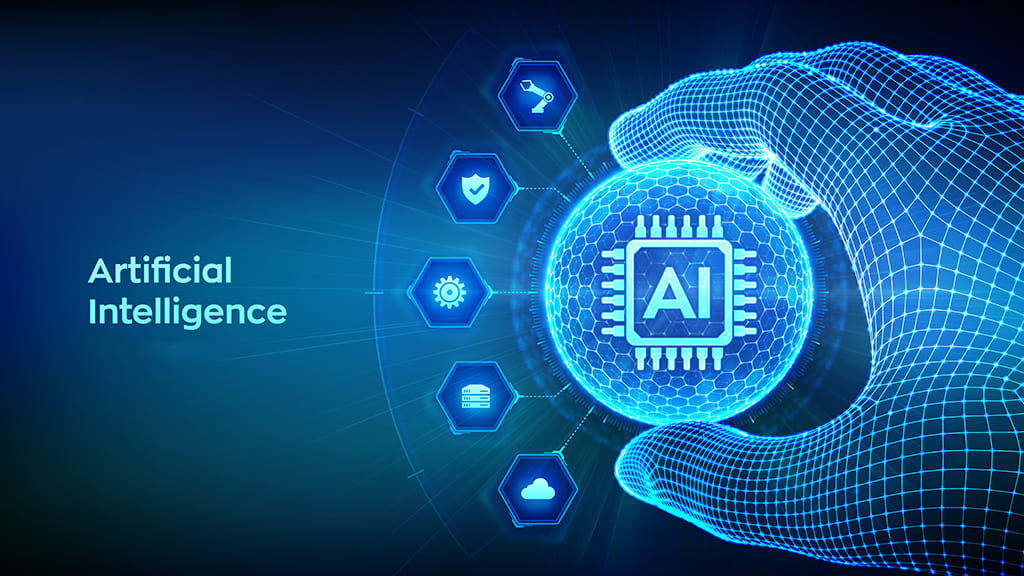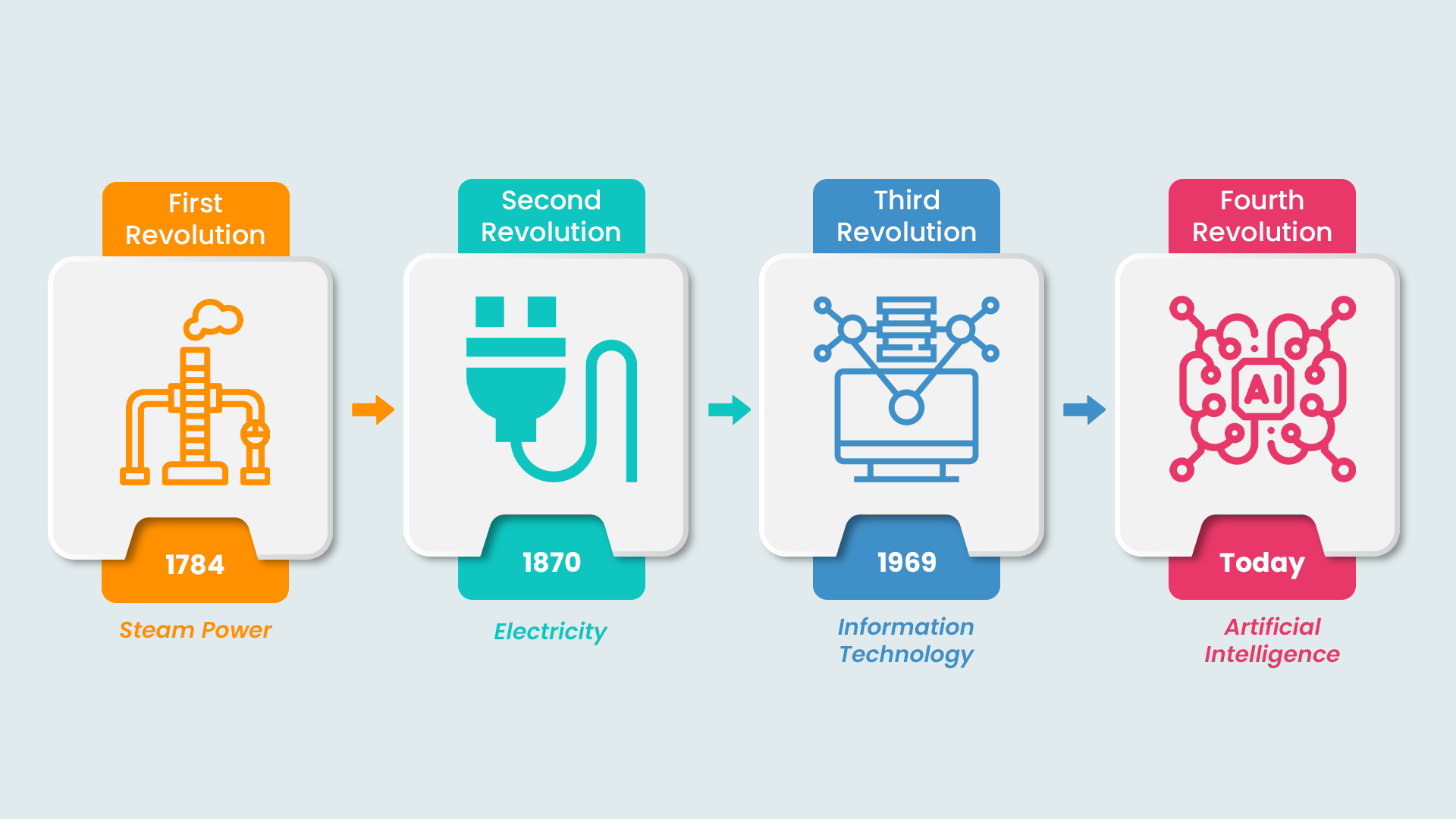
Humanoid robots, chatbots and driverless cars in Sci-Fi movies have always fascinated the humans for how they work, understand our commands and solve complex problems.
The answer, which was a dream, is now a reality!
All credits to Artificial Intelligence that has really flipped the way we interact with each other and the technology.
But, what’s exactly this technology and how it evolved? Why do we need it and how it’s reshaping the business world?
So, let’s dive in this raging world of technology and uncover layers about evolution of AI.
What is Artificial Intelligence?
Artificial Intelligence is a breakthrough technology which simulates human intelligence in machines and make them think and deliver responses using various techniques.
AI equips a machine to solve complex problems as well as perform various functions such as analysing a language, ability to see and respond, speech recognition and much more.
The machines driven on AI continuously “learn to think” using trial and error with a medium usually human helping them to understand the difference between the right and the wrong.
Evolution of AI: History, Challenges and Emergence

The concept of AI isn’t new. Its roots date back during the era of third industrial revolution where information technology started to make its boom.
It was in early 1950’s when the great British mathematician and founder of Turing Machine, Alan turning came up with theory of machines that could think.
Then began an era of self-operating machines that could solve complex tasks as well as play games such as Chess. But these were slow.
Why? There were certain challenges that hinder the development of AI such as:
- Limitation on computation power
- Lack of finances
- Enough data was not available to train the machines models due to lack of huge data storing devices.
Emergence of AI
Seismic shifts were witnessed in AI with the advancements in cloud computing, big data, and high-tech computer hardware.
Emergence of machine learning algorithms allowed the machines to be fed with huge amount of data. This helped the machines to mimic the decision-making capability as humans rather than relying on pre-programmed rules.
New learning practices such as machine learning, natural language processing, deep learning, computer vision and robotics paved the way to a bright AI driven future.
The funding assistance from governments, corporates, research institutes and other unanimous bodies has helped further growth and development of Artificial Intelligence.
What are the different techniques in AI with examples?
Every AI technique has its own application and unique characteristics. Let’s have a look at some common AI techniques with their applications.
Machine Learning
Machine learning is an amazing technique where algorithms are trained to understand the relationships in data and to learn the patterns without being programmed explicitly.
Example: A machine learning system can be trained on a set of images and help in facial and other object/pattern recognition.
Natural language processing (NLP)
Here algorithms are designed that help understand and interpret the human language.
Example: chatbots and other virtual assistants such as Alexa, Siri understand the human input and respond do their queries in the most efficient manner.
Computer Vision
This is one of the major breakthroughs in the IT technology as this technique allows the machines to interpret visual data from the environment around them.
Example: Autonomous cars that automatically identify the objects around them and seamlessly navigate on the road.
Deep Learning
Deep learning strategy is a subset of machine learning which uses neural networks to learn and represent the complex patterns in the data.
Example: Deep learning is extensively used in the field of speech recognition, self-operating cars, image recognition and NLP.
Reinforcement Learning
With this technique the machine model learns to interact with an environment based on the actions such as receiving rewards or punishments.
Example: AI can be trained to play games such as chess, Go at pro level.
Fuzzy Logic
This technique works best when dealing with things that are uncertain and there is imprecision in data.
Example: Fuzzy logic automatically detects the traffic flow and adjusts the traffic timings.
What is the need of Artificial Intelligence?
With the rapidly evolving technology, our lives and businesses stand completely disrupted by the evolution of AI.
Let’s have a look at how evolution of AI is helping businesses and changing our lives.
– Automation of processes
Artificial intelligence can automate time consuming tasks and repetitive processes and free up human effort to focus on other creative work.
Practical Application in healthcare Industry:
The machines based on artificial intelligence can easily analyse large amounts of medical data and enable accurate diagnoses, better clinical decision-making, and phenomenal patient care.
IBM’s Watson health platform easily analyses patient data and recommend better treatment plans.
– Boost Efficiency in every process
As AI based models can easily perform complex calculations more accurately and faster than humans Leading to improved efficiency and productivity
Practical Application in Finance Industry:
AI analyses the financial data do identify trends and patterns. This will help make better investment recommendations.
Bridgewater Associates- an investment management firm uses AI algorithms to manage its hedge fund.
– Behaviour based Personalization
Artificial intelligence can analyse the data based on individual preferences, behaviours, recommendations, responses, and services thereby improving the overall user experience.
Practical Application in social media Industry:
Be it YouTube, Facebook or Instagram, every platform shows the posts, or the stories based on your past preferences or searches. Thereby, making it more relevant.
– Improved Decision-making capabilities
AI based models can make predictions based on the responses and help business organisations to make more informed decisions.
Practical Application in Retail Industry:
Artificial intelligence can read and analyse the customer data to provide personal recommendations an improved customer experience.
Amazon, the retail e-commerce giant uses algorithm to suggest personalized products to their customers based on their purchase history and browsing scenarios.
– Driving Innovation by opening new opportunities
By offering better data analytics, insights, and decision-making capabilities just like humans, AI help drive innovation in the businesses and change the complete outlook of doing business.
Practical Application in Manufacturing Industry:
AI can help improve the bottom line of the company by automating the manufacturing processes. This is done by proactively predicting equipment failures, identifying the opportunities for optimization and much more.
GE, the American multinational company uses AI algorithms that help them understand when the aircraft engines need maintenance.
Some Recent Developments in AI that completely disrupted tech Industry
From startups to many big tech giants are in a rat race to use AI in their processes and achieve better efficiency, garner process automation, personalization and stay ahead of their competitors.
So, here are some recent developments in AI that have doomed the world into thinking again and appreciate the intelligence going beyond our expectations.
– Chat GPT3 based on Natural Language Processing
Chat GPT3, developed by OpenAI, is a powerful natural language processing tool that uses the technique of deep learning to understand and respond to queries posted by humans.
This tool have disrupted all the businesses and operations with its impressive functionality that delivers best suited answers exactly as desired.
– AI as a Service (AIaaS)
AI as a service or AIaaS enables the businesses and developers to use the AI applications by the means of cloud services through various platforms or APIs.
– Sophia robot
One of the most technically advanced humanoid robot that can interact with humans and uses the NLP, machine learning and deep learning to respond to natural language commands and facial recognition.
– Self-Driving Cars
Self-driving or automated cars are no longer a dream, rather a reality now. They have already been taken into application and have certainly revolutionized the way of transportation and logistics.
– Alpha Go
The most advanced AI program that was designed to solve complex problems and even defeated the world champion in the game of “Go”.
Future of AI
The future of Artificial Intelligence looks promising as we can certainly expect some more amazing trends to follow.
From creating new jobs to transforming every industrial sector, AI will be a key player in improving our daily lives too. Click here to explore some of the upcoming trends in future of AI.
Click here :- to explore some of the upcoming trends in future of AI.
Conclusion
Artificial Intelligence or what we call as AI, has come a long way from pre-programmed systems to deep learning systems.
With continuous advancements in research, computing power and data availability options, AI is becoming more sophisticated, ubiquitous, and beneficial to human race.



